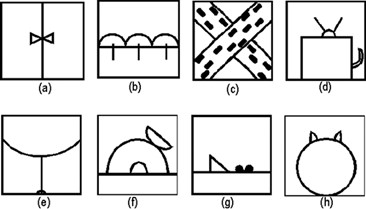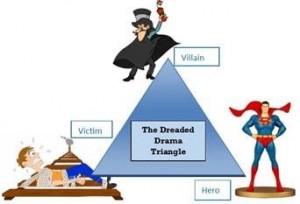I’ve worked with many organizations and groups over the years to determine and resolve challenges…

Conflict & Storytelling
Marjorie and I use the above Droodle drawings in workshops to help others see new perspectives. Roger Price drew the original Droodles by creating simple drawings to share funny ideas. See what you think the drawings below are of and find other interpretations at the end of the article.
Your perception interacts with your memory to connect to an emotion, an assumption, a belief, and ultimately an action. When you glance at the images above, what do you see? What does it represent to you?
Why not show it to someone else now and ask what they see? What would they call it? How does this change your perception? When others share their perspectives of what the image is you may have to pause for some time before you see anything new. We may become stuck in our perspective. Once an idea has lodged in your mind about what it is, you will never see this image again the same way.
We create stories around our perceptions; those stories become part of our own history and being. They may become part of the way we define ourselves and our view of the world. When the story becomes our truth, we experience resistance when we meet up with a new story that does not connect to our own.
So how does knowing this help us overcome resistance? We believe we have to work to create a new mutual story which grows from the two conflicting stories. It takes time, and trust, and an openness to new ideas.
Storytelling and the Brain:
Stories and metaphors convey information in a way that reaches far more than our analytical cognitive brain. They trigger experiences, feelings, memories as well as connections in our brain (for instance, if we hear something new and immediately think “ah, this reminds me of that”, etc.). Also they allow us to process information at our own pace. As we are unique, the stories and metaphors that we hear reach us in different ways, depending on our own history, values and where we are in our lives at the moment.
“Stories and metaphors can trigger our creativity as they access our unconscious mind which is richer in resources than our conscious mind.” (source – ADRIC Mediation course material)
How can you incorporate stories into your team discussions?
What stories need to be told?
How have old stories affected existing perspectives?
 Our work in conflict coaching often focuses on the opportunity to bring awareness to the “I’m the victim here” mentality. When we see ourselves as the “Victim” we become innocent and powerless. The “Victim” is someone who usually feels overwhelmed by their own sense of vulnerability, inadequacy or powerlessness, and tends not to take responsibility for themselves or their own power in their conflict situation. They may look for a “Hero” to take care of them and resolve the situation. I’m always clear to parties that I’m not there to ‘fix’ anything or “do” anything to them, but to support them in their progress to resolution.
Our work in conflict coaching often focuses on the opportunity to bring awareness to the “I’m the victim here” mentality. When we see ourselves as the “Victim” we become innocent and powerless. The “Victim” is someone who usually feels overwhelmed by their own sense of vulnerability, inadequacy or powerlessness, and tends not to take responsibility for themselves or their own power in their conflict situation. They may look for a “Hero” to take care of them and resolve the situation. I’m always clear to parties that I’m not there to ‘fix’ anything or “do” anything to them, but to support them in their progress to resolution.
If we see ourselves as the “Victim”, the other party in the conflict becomes the “Villain’ or the adversary who is out to harm us. In the book ‘The Joy of Conflict Resolution’ the author Gary Harper outlines this victim, villain, hero drama triangle in an effort to help us become aware of our situation and work to change our perspective. Gary says “once we are aware of it, we can step back and acknowledge our place on the drama triangle and choose to view and approach our conflicts differently. We can see our adversary not as the villain, but as someone with whom we must work to identify and solve the problem. In doing so, we move beyond the drama triangle and towards resolution.”
If your team is stuck and requires a shift ask the following questions to determine the limiting beliefs of your team’s story and move beyond the drama triangle.
- Who is the victim, villain or hero in the situation?
- What is within the team’s control – are they seeking someone to be the hero and fix the situation?
- Want does your team need to do to move beyond the drama triangle?
Droodle interpretations: Droodles (a) (b) and (c) are originals by Roger Price, the others are contributions to the Droodles home page by Leo Valdes (a) Man wearing a bow tie entered a crowded elevator and the door closed on his tie. (b) Rear view of the starting line for a rat race. (c) Giraffes in love (d) Cat watching TV (e) Flea holding up an elephant (f) Igloo with a satellite dish. (g) Shark returning from a holiday at Disneyland (h) Rabbit blowing a large bubble.
The Workplace Fairness Institute works to shift team thinking by bringing awareness to storytelling and its impact.

Receive The Conflict Toolbox Series
The conflict toolbox series is a series of four emails with each one including a tool for your conflict resolution toolbox. After we send you the four tools, we will send you our monthly newsletter. We will always ask before sending anything else!



